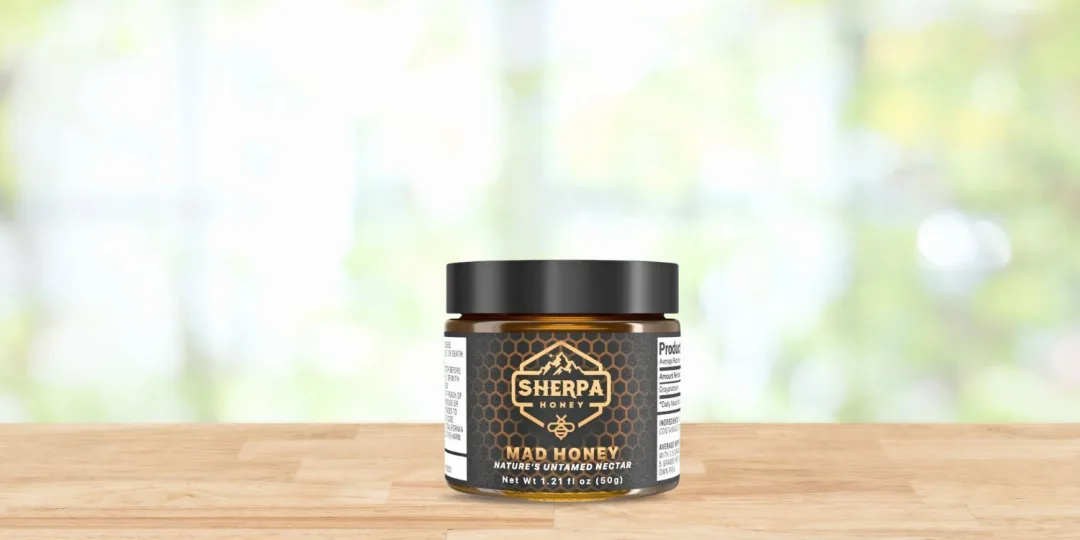Explore the enigmatic allure of Mad Honey, a sweetener unlike any other. Originating from the nectar of Rhododendron flowers, this honey harbors a secret that transcends its delectable taste. Intriguing effects and centuries-old traditions shroud Mad Honey in mystery, captivating the senses and sparking curiosity. Whether you seek to uncover its ancient rituals, its potent medicinal properties, or its modern-day applications, the journey into the world of Mad Honey promises to reveal a fascinating blend of nature’s wonders and human fascination.
The Origins of Mad Honey
If you’ve ever wondered about the origins of mad honey, you’re in for a fascinating journey into the depths of history and nature.
Mad honey, also known as hallucinogenic honey, has a long history dating back thousands of years. It originates from the nectar of Rhododendron flowers, particularly found in regions like Nepal, Turkey, and the Black Sea area. Bees collect the nectar from these flowers, which contain grayanotoxins, a natural neurotoxin. These toxins aren’t harmful in small doses but can cause hallucinations, dizziness, and even heart problems if consumed in large quantities.
The tradition of harvesting mad honey goes back to ancient times when people would brave the dangers of collecting this potent substance for its unique effects. It was used for medicinal, spiritual, and even warfare purposes by various cultures.
Today, mad honey continues to be sought after by enthusiasts for its exotic taste and the fascinating journey it offers into the intersection of nature and human curiosity.
Cultural Significance and Lore
Exploring beyond its botanical origins, mad honey holds a captivating place in various cultures worldwide, enriched with centuries-old traditions and intriguing folklore.
In Nepal, the Gurung tribe reveres mad honey for its medicinal properties and as a symbol of courage and strength.
In Turkey, mad honey features prominently in traditional wedding ceremonies, symbolizing a sweet start to a new life together.
Among the Indigenous Ainu people of Japan, mad honey is believed to have mystical properties, offering protection against evil spirits.
In the Caucasus region, mad honey is linked to ancient rituals and beliefs surrounding fertility and prosperity.
The Berbers of North Africa have long viewed mad honey as a sacred substance, using it in religious ceremonies and as a remedy for various ailments.
Across continents, mad honey weaves a tapestry of cultural significance, intertwining nature’s sweetness with humanity’s deepest traditions and beliefs.
Medicinal Properties and Uses
Mad honey, renowned for its unique properties, has been utilized for centuries across various cultures for its medicinal benefits and healing properties. This special honey is known for its antibacterial, anti-inflammatory, and antioxidant qualities. Consumed in moderation, mad honey has been used to treat various ailments such as coughs, sore throats, digestive issues, and even skin wounds. It’s believed to boost the immune system, aid in digestion, and alleviate allergies.
Additionally, some cultures use mad honey as a natural remedy for hypertension and as a source of energy due to its high levels of natural sugars.
Furthermore, mad honey has been used traditionally to enhance vitality and as a natural aphrodisiac. The unique properties of this honey have also shown potential in managing certain chronic conditions like arthritis and cardiovascular diseases. With its rich history of medicinal uses, mad honey continues to intrigue researchers and health enthusiasts alike, offering a natural alternative for various health concerns.
Harvesting and Production Techniques
When harvesting and producing this exceptional honey, beekeepers employ meticulous techniques to ensure quality and potency. The process involves careful steps to guarantee the purity and effectiveness of the final product.
Here are five important techniques used in the harvesting and production of mad honey:
- Selective Harvesting: Beekeepers selectively harvest honey from specific hives known to produce the potent nectar, ensuring consistency in quality.
- Timing: Harvesting is done at specific times when the toxic properties of the nectar are at their peak, maximizing the potency of the honey.
- Traditional Methods: Many beekeepers use traditional methods handed down through generations, preserving the authenticity and unique characteristics of mad honey.
- Natural Environment: Beehives are often placed in remote, mountainous regions with specific flora that contribute to the honey’s unique properties.
- Minimal Processing: To retain the natural benefits of mad honey, minimal processing is employed, maintaining its raw and unadulterated state.
Modern-Day Applications and Consumption
In today’s culinary landscape, the unique flavor profile and potential health benefits of mad honey have sparked interest in its modern-day applications and consumption. Mad honey is not only being used as a sweetener but also finding its way into various dishes and beverages due to its distinctive taste and purported medicinal properties.
One popular modern application of mad honey is in salad dressings, where its slightly bitter and floral notes add a unique depth of flavor. Additionally, some people enjoy drizzling mad honey over artisanal cheeses to create a sweet and savory contrast. Moreover, mixologists are incorporating mad honey into cocktails to introduce a new dimension of taste to their creations.
Here is a glimpse of how mad honey is being used in modern cuisine:
| Modern Application | Description | Benefits |
|---|---|---|
| Salad Dressings | Adds a unique depth of flavor with floral notes | Rich in antioxidants |
| Cheese Pairings | Creates a sweet and savory flavor contrast | Contains antibacterial properties |
| Cocktails | Introduces a new dimension of taste in drinks | Believed to have anti-inflammatory effects |
Frequently Asked Questions
Are There Any Risks or Side Effects Associated With Consuming Mad Honey?
When consuming mad honey, you should be aware of potential risks and side effects. It can cause dizziness, nausea, and even heart complications. Always exercise caution and consult a healthcare professional before trying this unique sweetener.
How Does the Taste of Mad Honey Compare to Regular Honey?
Mad honey boasts a unique flavor profile compared to regular honey. Its taste is rich, earthy, and slightly bitter, with floral undertones. You may find it intriguing if you enjoy exploring new and distinctive culinary experiences.
Can Mad Honey Be Used in Cooking and Baking?
Yes, you can use mad honey in cooking and baking. It adds a unique flavor profile and subtle hint of intoxicating properties. Be cautious with the amount used due to its potency for a delightful culinary experience.
Are There Any Specific Storage Requirements for Mad Honey?
To store mad honey properly, keep it in a cool, dark place away from moisture. Seal the container tightly to prevent crystallization. Check for any signs of spoilage before using it in cooking or baking for the best results.
How Can Consumers Differentiate Between Genuine Mad Honey and Counterfeit Products?
To tell real mad honey from fake, look for reputable sellers. Check for certifications or labels. Authentic honey may have a distinct taste and aroma. When in doubt, trust your instincts and choose wisely.
Conclusion
Indulge in the enchanting world of Mad Honey, where ancient traditions and modern science converge to create a truly unique and captivating sweetener. With its rich history, medicinal properties, and mystical allure, Mad Honey continues to fascinate and intrigue those who seek a taste of nature’s most extraordinary gift. So go ahead, savor the magic of Mad Honey and experience the wonder of this extraordinary natural treasure.



